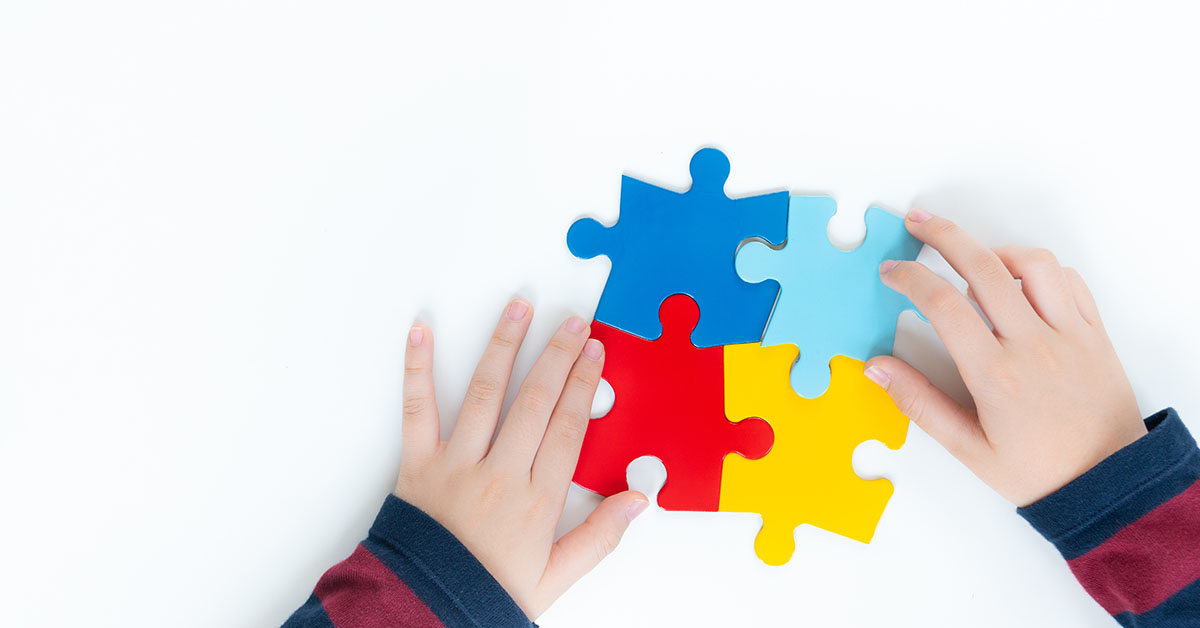Autism and Sensory Handling: Checking Out the Link and Its Impacts
Autism and Sensory Handling: Checking Out the Link and Its Impacts
Blog Article
Exploring Autism: Techniques for Efficient Communication and Interaction
Reliable communication and communication with individuals on the autism range require a comprehensive understanding of their one-of-a-kind needs and choices. The complexities of these strategies expose more considerations that warrant exploration, especially in how they can be adapted to specific experiences and diverse contexts.
Comprehending Autism Range Disorder
Autism Range Problem (ASD) encompasses a series of neurodevelopmental conditions defined by obstacles in social interaction, communication, and recurring behaviors. The term "spectrum" shows the varied manifestations and varying levels of severity experienced by individuals with ASD. While some might show significant disabilities, others might display high-functioning characteristics, permitting better independence in every day life.
The beginning of ASD generally happens in very early childhood years, with signs frequently identifiable by age 2. Early signs might consist of postponed speech development, minimal eye contact, and problems in comprehending social signs. Although the specific etiology of ASD continues to be vague, study recommends a mix of ecological and hereditary variables plays an important function in its advancement.
As a result, treatments and support customized to private demands are necessary for fostering interaction and social skills. Identifying the complexity of ASD is vital for advertising awareness, approval, and effective approaches that help with purposeful interactions with people on the spectrum.

Significance of Clear Communication
Reliable interaction is important for fostering understanding and link, specifically for individuals with Autism Spectrum Problem (ASD) Clear interaction not only assists in social interactions but additionally improves the individual's capacity to share their needs, ideas, and emotions. For people with ASD, the nuances of language can often be testing; for that reason, using simple and unambiguous language is crucial.
Furthermore, clear interaction assists reduce irritation and anxiety that might arise from misconceptions. When messages are conveyed in a regular and direct way, individuals with ASD are better equipped to translate details precisely, which can significantly improve their social involvement and participation in numerous settings.
Establishing regimens and making use of visual supports can better bolster clear communication. These approaches provide individuals with foreseeable structures that help understanding and retention of details. Additionally, actively being and paying attention patient during interactions advertises an encouraging environment where individuals with ASD feel valued and comprehended.
Inevitably, prioritizing clear communication not only equips people with ASD yet also fosters more significant links with their peers, caregivers, and the broader area, leading the way for collective connections and inclusive interactions. - autism
Non-Verbal Communication Methods
Communication prolongs beyond words, and for individuals with Autism Spectrum Disorder (ASD), non-verbal cues play a significant role in interactions. Non-verbal communication techniques can include face expressions, motions, body movement, and eye call, every one of which work as important elements for conveying emotions and objectives.
Recognizing and analyzing these non-verbal signals can improve interactions with individuals with ASD. For example, a warm smile or open pose can create a welcoming ambience, encouraging engagement. Utilizing visual help-- such as photo cards or symbols-- can link interaction gaps and aid communicate messages much more effectively.
It is additionally essential to be conscious of individual space, as people with ASD might have different convenience levels regarding closeness. Observing their reactions to physical closeness can educate suitable changes.

Creating Encouraging Atmospheres
Developing a helpful environment is crucial for cultivating positive communications and improving the well-being of people with Autism Spectrum Condition (ASD) Such environments can dramatically minimize anxiety and develop a sense of safety and security, allowing people to express themselves extra freely.
To attain this, it is vital to consider sensory level of sensitivities that people with ASD may experience. Changing the physical space to consist of soft lighting, very little history noise, and comfy seats can produce a relaxing atmosphere. Furthermore, making use of constant routines and clear aesthetic timetables can help people prepare for transitions and minimize unpredictability, further promoting comfort.
Social rooms ought to be structured to lessen frustrating stimuli while supplying possibilities for engagement in favored tasks. Facilitating areas assigned for silent time can additionally serve as a sanctuary throughout minutes of tension. Significantly, including elements of option equips people, permitting them to work out agency in their environment.

Encouraging Social Communications
Fostering social interactions amongst individuals with Autism Spectrum Problem (ASD) requires willful strategies that focus on convenience and engagement. Developing foreseeable routines can help in reducing stress and anxiety, making social setups more approachable. Developing structured atmospheres with specified duties and duties allows individuals to involve without the frustrating stress of unstructured social dynamics.
Integrating passions and strengths into social activities link can function check it out as a stimulant for interaction. For example, organizing team tasks around shared leisure activities or topics of fascination can help with natural discussions and links. Furthermore, using aesthetic assistances, such as social manuscripts or photographic timetables, can assist in recognizing social cues and expectations.
Modeling appropriate social behaviors is vital - autism. Grownups and peers need to show reliable interaction strategies, consisting of energetic listening and turn-taking. Role-playing circumstances can additionally give a secure room for people to exercise these abilities
Finally, promoting peer connections through inclusive techniques is essential. Urging comprehensive playdates or team trips can create opportunities for socializing in a comfy setup. By applying these approaches, caretakers and teachers can significantly boost social interactions for individuals with ASD, advertising their overall social growth and wellness.
Verdict
In final thought, reliable communication and communication techniques are essential for supporting people with Autism Range Problem. Emphasizing clear language, including non-verbal cues, and establishing foreseeable routines substantially boost interaction and lower anxiety. Producing encouraging environments promotes secure social interactions, while motivating shared passions facilitates significant links. Inevitably, these strategies equip people with autism to browse social landscapes, advertising their overall wellness and allowing the growth of lasting connections.
Effective communication and interaction with individuals on the autism range necessitate a comprehensive understanding of their unique needs and preferences. Clear communication not only facilitates social interactions but also boosts the person's capacity to share their thoughts, emotions, and demands.Promoting social interactions among individuals visite site with Autism Range Problem (ASD) needs deliberate strategies that focus on convenience and interaction. By executing these strategies, caretakers and teachers can substantially enhance social communications for individuals with ASD, advertising their general social development and health.
In final thought, effective interaction and communication techniques are important for sustaining individuals with Autism Range Disorder.
Report this page